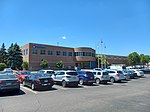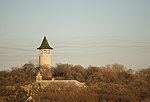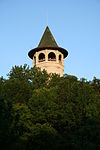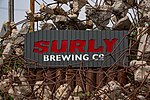Westgate station (Metro Transit)

Westgate is a light rail station along the METRO Green Line in Saint Paul, Minnesota. It is located along University Avenue on either side of the intersection with Berry Street. The station has split side platforms, with the westbound platform on the north side of the tracks west of Berry Street, while the eastbound platform is on the south side of the tracks on the east side of the intersection. The westbound platform slightly extends into neighboring Minneapolis. Construction in this area began in March 2011. The station opened along with the rest of the line in 2014. Rather than being named after the intersecting street as with most of the stations along University Avenue, it is named after the area. The name "Westgate" comes from the area being the western gateway into Saint Paul. Before the construction of I-94 and Highway 280 it was known as the "West End Manufacturing District." The Westgate Business Center is located immediately north of the station.North of the station on Berry Street is an informal transit center, where Routes 30 and 63 begin and end their trips. The METRO E Line is planned to terminate at the station.On August 31, 2014, around 10:15 AM Shana G. Buchanan, 42, was hit and killed at the Westgate station by the Metro Green Line train as she crossed the tracks in front of the train.
Excerpt from the Wikipedia article Westgate station (Metro Transit) (License: CC BY-SA 3.0, Authors, Images).Westgate station (Metro Transit)
University Avenue West, Saint Paul Saint Anthony Park
Geographical coordinates (GPS) Address Nearby Places Show on map
Geographical coordinates (GPS)
| Latitude | Longitude |
|---|---|
| N 44.966961111111 ° | E -93.205127777778 ° |
Address
University Avenue West 2599
55114 Saint Paul, Saint Anthony Park
Minnesota, United States
Open on Google Maps






